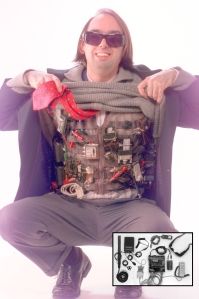(By Jason Reagan)
Writer Alison E. Berman makes a solid debut with her post at  Singularity Hub today. In her analysis of Ray Kurzweil’s recent musings, Alison poses the question “Are You a Thinking Thing? Why Debating Machine Consciousness Matters.”
Singularity Hub today. In her analysis of Ray Kurzweil’s recent musings, Alison poses the question “Are You a Thinking Thing? Why Debating Machine Consciousness Matters.”
Specifically, Berman posits:
Continue reading I think therefore….I may be a machine? Or not?









